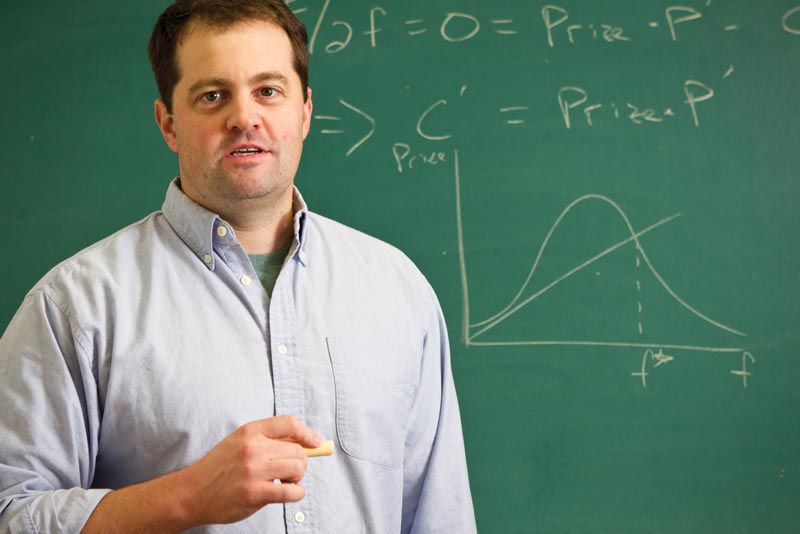
Todd McFall is an assistant teaching professor in the Department of Economics at Wake Forest University. Photo courtesy of Wake Forest University
Editor’s note: Read more about the current labor challenges facing the golf industry in Labor pains in golf course management.
Todd McFall is an economist and a golfer.
So when he hears golf course superintendents are almost universally grappling with a crippling labor crunch, he can’t help but be more than a little concerned.
McFall, a sports economist and assistant teaching professor at Wake Forest University in Winston-Salem, N.C., was asked to weigh in on the results of GCSAA’s November 2018 Labor Survey, which he described as full of “gloomy” numbers.
“I really can’t emphasize enough how dynamic the labor market is,” McFall says. “It’s easy to think back, relative to six, seven years ago, that things are a lot different, especially the ability to keep the lower-skilled workers at the course. In 2012, unemployment was under 9 percent. Now it’s 3½. A lot of industries are having to deal with that reality. They don’t want to change pay, because obviously that hurts the bottom line. And it’s not like golf courses are flush with cash.”
The nature of most golf course maintenance jobs — particularly the most entry-level positions of crew member or equipment operator, which superintendents said were by far the most difficult to fill and keep filled — complicates the issue.
“For workers of that sort, the lower-skilled workers, there is a wealth of opportunity that has popped up over the last few years,” McFall says. “You can go work other jobs that are a little safer, that maybe pay a little better. I can understand why that’s becoming more difficult. Before, you didn’t have to offer raises. No one else was hiring. Relatively speaking, those labor markets have changed quite a bit.”
McFall says there’s no panacea.
It’s an issue facing courses large and small, public and private, those open year-round and those open seasonally, and courses at all the compass points. And many of the solutions offered by superintendents in the labor survey often drew contradictory reactions. While many praised the success of using retiree labor to fill gaps, some panned the practice. Some superintendents lauded their student workers; others lamented their work ethic. Some count on temporary foreign H-2B visa workers; others say the program is more headache than help.
McFall says he could easily envision a future in which robots handle some hard-to-fill jobs. He points to automated mowers as an example.
“That tremendously cuts back on hiring certain workers,” he says. “I could see golf courses working toward automation, like the fast food or automotive industries.”
A self-described “huge golf fan” and player of the game — at least, he jokes, before he had children — McFall also acknowledges a potential future in which golf courses aren’t the pristine playgrounds of yore.
“It’s always bothered me to some extent that the average golfer thinks they have to play at Augusta National,” McFall says. “It’s the Augusta National-ization of the game. They think the course has to be perfect and the greens have to be really fast. That doesn’t necessarily have to be the case. Maybe this speeds up the idea that courses need to be redesigned a little bit, a little more natural, with not so many sand bunkers and water that has to be maintained. It’s one thing to play at a more natural course. It’s another not to have a course at all.”
Andrew Hartsock is GCM’s managing editor.